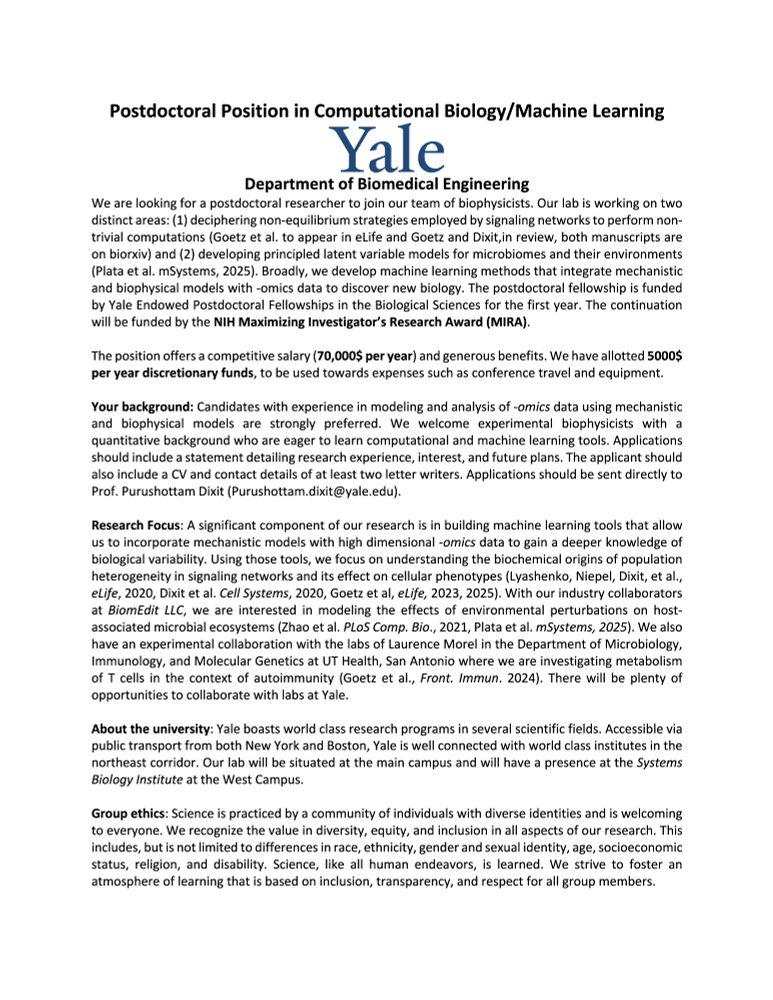Purushottam Dixit
@pdixit.bsky.social
180 followers
120 following
28 posts
Assistant Professor, Biomedical Engineering, Yale University. Computational biologist.
Posts
Media
Videos
Starter Packs
Purushottam Dixit
@pdixit.bsky.social
· Jul 30
Purushottam Dixit
@pdixit.bsky.social
· Jul 30
Purushottam Dixit
@pdixit.bsky.social
· Jul 30
Purushottam Dixit
@pdixit.bsky.social
· Jul 30
Purushottam Dixit
@pdixit.bsky.social
· Jul 30
Purushottam Dixit
@pdixit.bsky.social
· Jul 30
Purushottam Dixit
@pdixit.bsky.social
· Feb 26
Purushottam Dixit
@pdixit.bsky.social
· Feb 11
Purushottam Dixit
@pdixit.bsky.social
· Feb 11
Purushottam Dixit
@pdixit.bsky.social
· Feb 6
Purushottam Dixit
@pdixit.bsky.social
· Dec 10

Designing host-associated microbiomes using the consumer/resource model | mSystems
Generative models are extremely popular in modern biology. They have been used to
model the variation of protein sequences, entire genomes, and RNA sequencing profiles.
Importantly, generative models ...
journals.asm.org
Purushottam Dixit
@pdixit.bsky.social
· Nov 25
Purushottam Dixit
@pdixit.bsky.social
· Nov 25
Purushottam Dixit
@pdixit.bsky.social
· Nov 25
Purushottam Dixit
@pdixit.bsky.social
· Nov 25
Purushottam Dixit
@pdixit.bsky.social
· Nov 25
Purushottam Dixit
@pdixit.bsky.social
· Nov 25
Purushottam Dixit
@pdixit.bsky.social
· Nov 25

Receptor polarization through localized activity and global sensitization
Eukaryotic cells chemosense concentration gradients of extracellular ligands using membrane-bound receptors that polarize their activity. Receptors from several chemosensing families are preferentiall...
www.biorxiv.org
Purushottam Dixit
@pdixit.bsky.social
· Nov 21
Purushottam Dixit
@pdixit.bsky.social
· Nov 18
Purushottam Dixit
@pdixit.bsky.social
· Nov 18
Purushottam Dixit
@pdixit.bsky.social
· Nov 18

